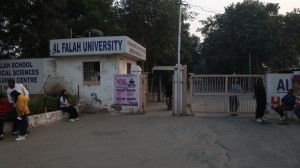The battle for knowledge economy
The new aggressiveness of India and China to capitalise on their demographic advantages particularly in high-quality knowledge-intensive and...

The new aggressiveness of India and China to capitalise on their demographic advantages particularly in high-quality knowledge-intensive and innovative enterprises has caused concerns elsewhere. The worry is highest in the United States. The report of a high-level committee entitled ‘‘Rising Above the Gathering Storm — Energising and Employing America for a Brighter Economic Future’’ has made far-reaching recommendations on reversing a trend where dilution of comparative advantage in knowledge intensive and innovative enterprises will hurt economic leadership.
The report must be seen in the backdrop of what is described as ‘‘worrisome indicators’’. These include facts like fewer than 1/3rd of US 4th and 8th Grade students performing at a level called ‘‘proficient’’ in mathematics and 12th graders performing below the international average for 21 countries in mathematics and science. While America produced 70,000 engineers in 2004, China graduated over 6,00,000 with India at 3,50,000. A slackening of money spent on Research & Development with US industry spending more on litigation than R&D is also worrisome.
In the light of the aforesaid, the committee has made four basic recommendations to focus on human, financial and knowledge capital for US prosperity which cover action on education (10,000 teachers, 10 million minds), research sowing the seeds, higher education (best and brightest) and sustaining innovation. The action plan includes significantly enlarged recruitment of teachers in science and mathematics, crash courses in sciences, attractive financial incentives for faculty, researchers, students; generous student scholarships which can prevent further hemorrhaging. Additional action has also been proposed for incentives for innovation and improved investment environment which enhances Intellectual Property protection and reforms in the working of the Patents and Trademark office.
How should India respond to these new initiatives? A ‘‘Knowledge Commission’’ was launched in early August to advise the Prime Minister on ‘‘matters relating to institutions of knowledge production, knowledge house and knowledge dissemination and ideas designed to sharpen India’s knowledge edge.’’ Speaking on the occasion, the Prime Minister emphasised that harnessing our brain power was crucial to sustain the country’s economic competitiveness.
There are really two issues with the knowledge economy: education and human resources development to produce good researchers on the one hand and IP protection and R&D funding to encourage these good researchers to produce useful knowledge on the other.
On human resource development, basically, any strategy to develop a broader base of researchers has to address both the demand and the supply side of education. Students must want to learn and to make the sacrifices required. They need to want to study the subjects that will propel the national knowledge economy forward, because they see the personal returns. Parents need to see the value of being supportive.
The demand side has been eroded in the US as well as to some extent in India by low-quality schooling. Citizens in both countries have limited access to the best education at all levels. While demand for quality education is clearly present (the number of students competing for entrance to IITs and IIMs, or the US Ivy Leagues is one indicator), demand for the average education available is not as strong.
Most policy prescriptions (the ‘‘Gathering Storm’’ and Knowledge Commission) focus on the supply side.
This is appropriate — it is needed, especially in India where teacher absenteeism is a problem and the student-teacher ratio is increasing. But simply expanding the supply — more buildings, more teachers, however, is not going to improve educational outcomes over the long run. Perhaps this is easier, but what would make students take advantage of these expanded facilities?
Improving supply will entail:
• Pay teachers and academics more so that the profession becomes more attractive, and not just a last resort for those who cannot find other jobs or have an unusual altruism.
• Take advantage of IT to share knowledge, do distance learning.
• Incorporate internships and other real-world experience into the classroom and education sequence.
On intellectual protection there are two basic ways to reward research: ex-ante funding and ex-post rewards. The US report addresses both, while the India report focuses more on the latter.
Both are complicated by the same basic question: how do you observe and reward the process of research? Ex-ante rewards will only produce good outcomes if they reward ‘‘good’’ researchers, but what are ‘‘good’’ researchers? Ex-post rewards have a different issue: the ‘‘good’’ researchers have already identified themselves by producing something, but then the question is how much to reward them.
Balancing these two demands is also complicated by the fact that research effort cannot be rewarded directly, because it is not observable. How to get around this, or at least find the most socially and economically efficient trade-off? This, however, remains the unresolved priority question.
Write to nksinghexpressindia.com



- 01
- 02
- 03
- 04
- 05




























